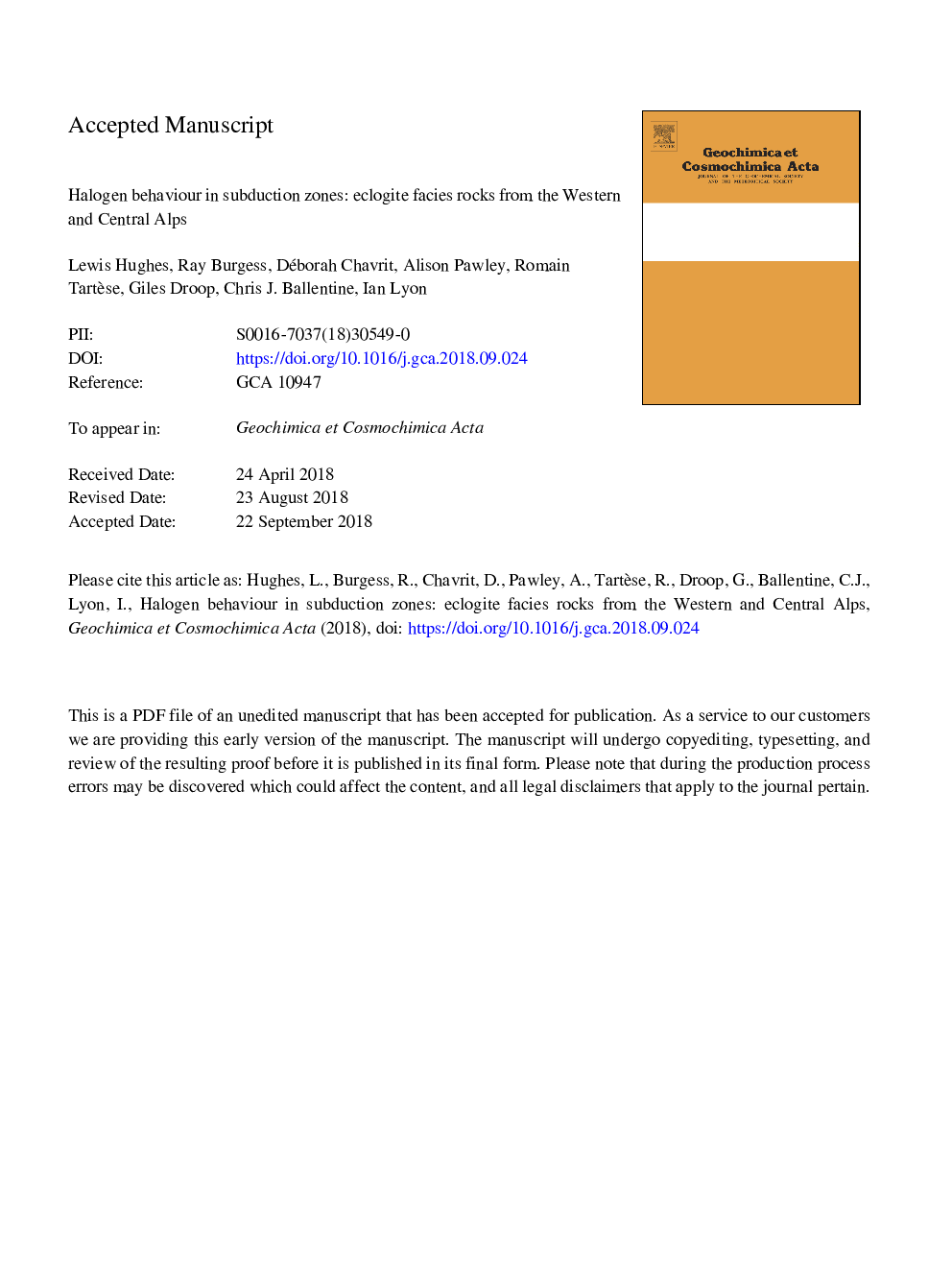| کد مقاله | کد نشریه | سال انتشار | مقاله انگلیسی | نسخه تمام متن |
|---|---|---|---|---|
| 11001902 | 1353702 | 2018 | 60 صفحه PDF | دانلود رایگان |
عنوان انگلیسی مقاله ISI
Halogen behaviour in subduction zones: Eclogite facies rocks from the Western and Central Alps
ترجمه فارسی عنوان
رفتار هالوژن در مناطق فرورانش: سنگ آهک اکلوزیت از کوه های غربی و مرکزی است
دانلود مقاله + سفارش ترجمه
دانلود مقاله ISI انگلیسی
رایگان برای ایرانیان
کلمات کلیدی
فلورین، کلر، بروم، ید، فرومغناطیس، اکلگیت، آلپ،
موضوعات مرتبط
مهندسی و علوم پایه
علوم زمین و سیارات
ژئوشیمی و پترولوژی
چکیده انگلیسی
We examined F, Cl, Br and I concentrations and distributions in eclogite facies rocks and minerals from the Western and Central Alpine ophiolitic zone to determine halogen behaviour in subduction zones, and to identify potential host phases that may be able to transport halogens to the deeper mantle. Analysis was carried out on a range of ophiolitic lithologies - peridotites, serpentinites, metagabbros, metabasalts and metasediments - to assess the distribution of halogens within deeply subducted oceanic crust. Halogen abundances in individual mineral phases range from below detection (â¼100â¯ppm) to â¼1900â¯ppm for F, â¼1 to â¼3000â¯ppm for Cl, â¼1 to â¼11,000â¯ppb for Br and from <1 to â¼1300â¯ppb for I. Bulk rock estimates of Cl, Br and I abundances are variable, but are generally more than one order of magnitude lower than those in altered oceanic crust (AOC), suggesting major halogen loss prior to or during eclogite facies metamorphism. Fluorine, however, can be enriched within metabasalts and metasediments, relative to the heavy halogens, suggesting F can be retained at eclogite facies conditions within the upper layers of the subducting slab. Bulk rock estimates suggest that upon reaching eclogite facies, the subducting slab has lost over 90% Cl, Br and I. Bromine and iodine concentrations show positive correlation, suggesting that they exhibit similar behaviour at high pressure. A lack of any other correlations suggest that F and Cl behave differently to Br and I during subduction. Elevated F/Cl, Br/Cl and I/Cl ratios, relative to AOC, suggest the preferential loss of Cl during shallower depths of subduction. In situ analyses and chemical mapping using electron probe micro-analysis and time of flight secondary ion mass spectrometry indicate that measured halogen abundances are primarily hosted within the mineral structure. Overall, our dataset provides new constraints on the available inventory of halogens that can be transferred to the deeper mantle via the subduction of oceanic crust.
ناشر
Database: Elsevier - ScienceDirect (ساینس دایرکت)
Journal: Geochimica et Cosmochimica Acta - Volume 243, 15 December 2018, Pages 1-23
Journal: Geochimica et Cosmochimica Acta - Volume 243, 15 December 2018, Pages 1-23
نویسندگان
Lewis Hughes, Ray Burgess, Déborah Chavrit, Alison Pawley, Romain Tartèse, Giles Droop, Chris J. Ballentine, Ian Lyon,
